‘TimeSplitters’ Retrospective: Free Radical’s Often-Overlooked Debut FPS Title Deserves More Love For Innovation And Fun

The announcement of Rare’s GoldenEye 007 marked a new era in the first-person shooter genre. Millions of gamers were enamored by the possibility of playing through a classic James Bond spy thriller. On August 23, 1997, GoldenEye 007 delivered. Big time. Not only with a cinematic story mode, but with a gripping multiplayer mode to boot. FPS fans the world over had a taste of the good stuff, and they were thirsty for more.
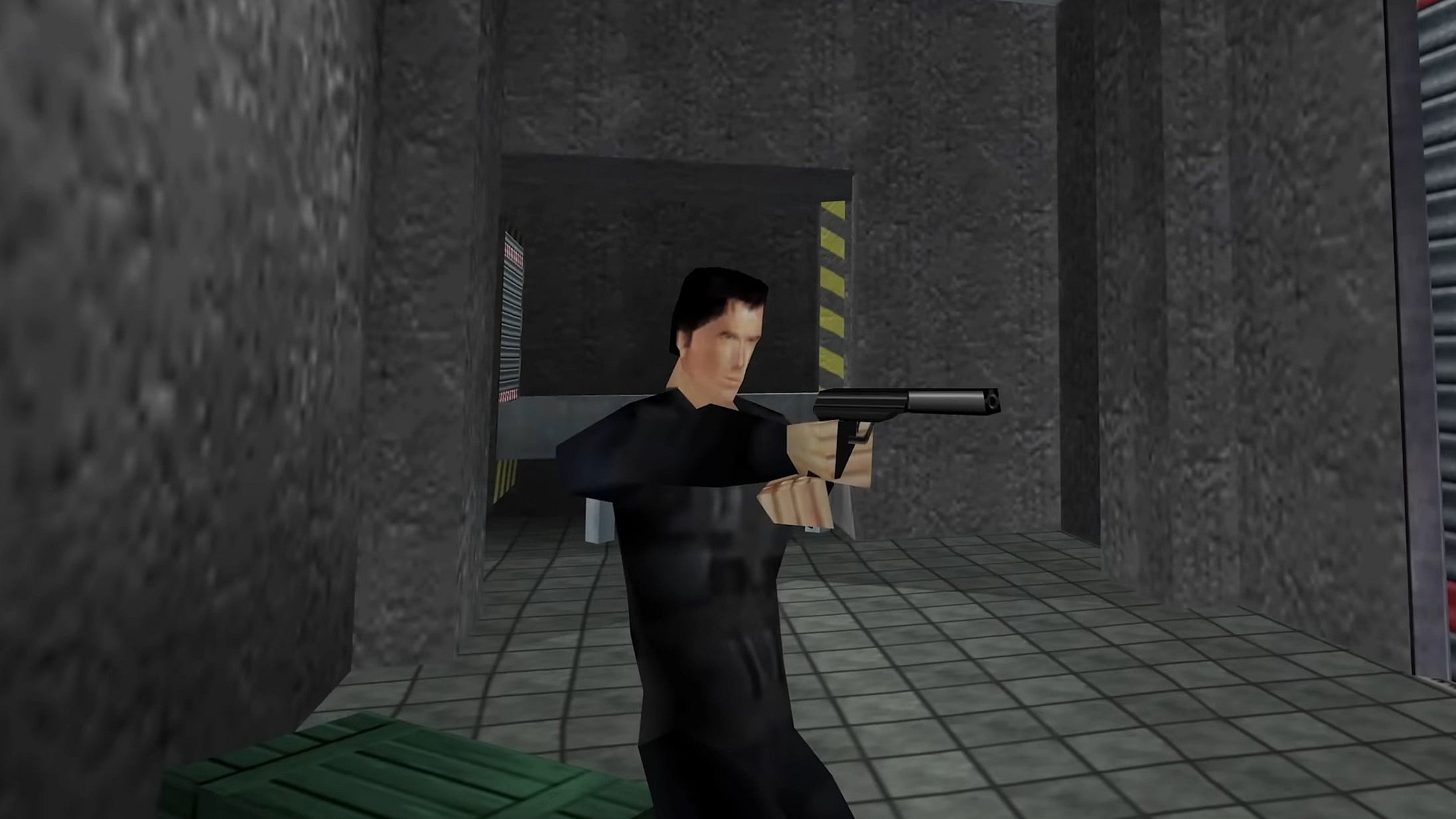
The post-“boomer shooter” golden age of FPS games had arrived, and GoldenEye 007 was the era’s figurative first course. Valve’s Half Life was not too far behind. Releasing on Windows machines in 1998, Half Life was testament to the idea that first-person shooters were much more than mindless fast twitch reaction amusement. Rather, the genre was more than adequate to host compelling settings and worthwhile narratives.
Very much unlike the OG FPS’ like Wolfenstien & Doom, Half life delivered the atmosphere and character design that it takes to scare the pants off any seasoned gamer. Still, despite being up to the brim with their single player experience, Valve didn’t focus much attention on their multiplayer modes, and delivered a passable, albeit surface level, experience. But worry not, this is the era of the FPS after all.
Epic’s 1999 Unreal Tournament, based on an ancient version of the insanely popular Unreal Engine, along with id Software’s Quake III Arena took care of the PC adrenaline junkies. Despite being light on the story, each game more than made up with buttery smooth gameplay, vertically impressive labyrinthine arenas, and a wide variety of awesome guns. These arena shooters made sure there was no shortage of competitive player versus player fun to be had on the Windows platform. Save for scarce examples of console FPS games, the market was virtually untapped. That is, until the launch of the PlayStation 2.
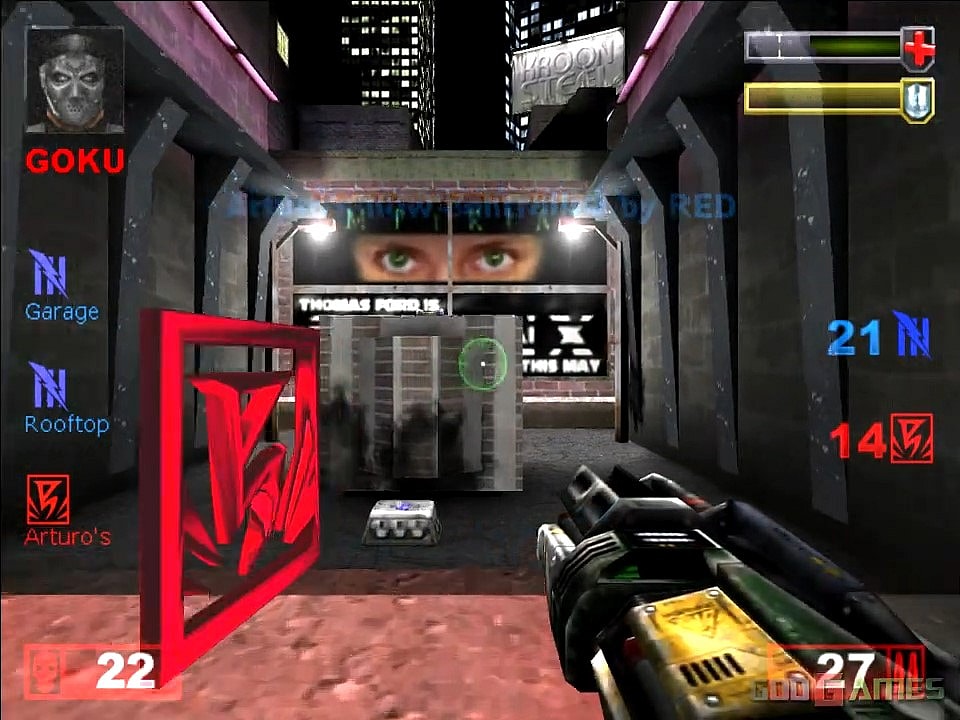
As those games took over the world, a new small Nottingham-based studio named Free Radical Design was cooking up its own entry to the shooter space. The team included former Rare developers: David Doak, Grame Norgate, Steve Ellis, Karl Hilton, Lee Ray, and James Cunliffe. Each had their hands in the development of GoldenEye 007 and the yet-to-be-released Perfect Dark for the Nintendo 64 console. The seasoned developers were ready to get in the ring with the biggest players in the industry. TimeSplitters was due to release alongside the PlayStation 2 in late 2000.
The team at Free Radical had a daunting task ahead of them. 16 months and a tight budget to develop their first title. The team had their priorities straight and after abandoning a third person sci-fi horror thriller for something they were much more familiar with, Free Radical began work on the bones of an FPS.
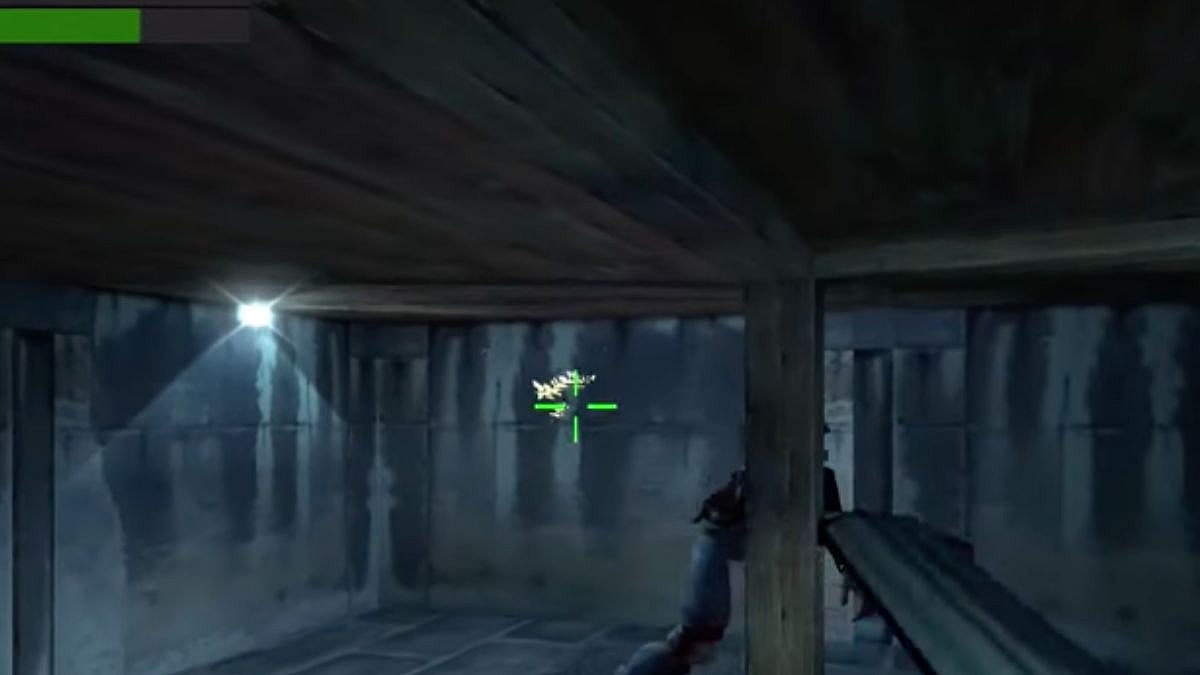
They were meticulous when deciding which elements would be included in their games and what would be left on the cutting room floor. Shooting and movement is the most fundamental part of any FPS title. So Free Radical developed a system that would arguably be a step up from GoldenEye 007’s own movement system. Twin stick analog movement and camera controls that were here to stay. Plus, completely re-bindable button mapping that was not, and still isn’t, the norm for console games. As a direct cause of the movement capabilities and extremely generous auto aim the game had achieved fast-paced gunplay, despite not having a dedicated jump button.
Taking a note directly from the legendary James Bond title, the “fine aim” trigger was present in TimeSplitters too. With a press of a button the player had the ability aim his weapon anywhere on the screen to the desired target with minimal change in the player camera point of view (which was the style at the time).
Eventually, however, this mechanic would prove to be an archaic way of finding a target and would effectively be replaced by aim down sight (ADS) and zoom in mechanics. Nevertheless, Free Radical’s desire to be at the cutting edge of gameplay was evident, and didn’t end with their gameplay mechanics.

TimeSplitters is at its core a sci-fi shooter, but that didn’t mean that the scope of the game would be limited to a dystopian future or abandoned space stations. In fact, as the title implies, time travel not only plays a critical role in the unfolding narrative, but gameplay design decisions too. Much like the PVP multiplayer romps that came before it, TimeSplitters used its lore and narrative to legitimize the cast of playable characters and seemingly random backdrops of each map. Despite the backseat the single player campaign may have taken, many players were attracted to the time jumping premise all the same.
That premise being: you play as an era-appropriate male or female character, you’re tasked with retrieving an era-appropriate item as you shoot era-appropriate bad guys with era-appropriate guns and extract before the Timesplitters have a chance to eat you for lunch. For example, the description of the mission “Tomb” simply reads as follows: “Find the Cultist’s ankh and return it to the shrine”. Simple.
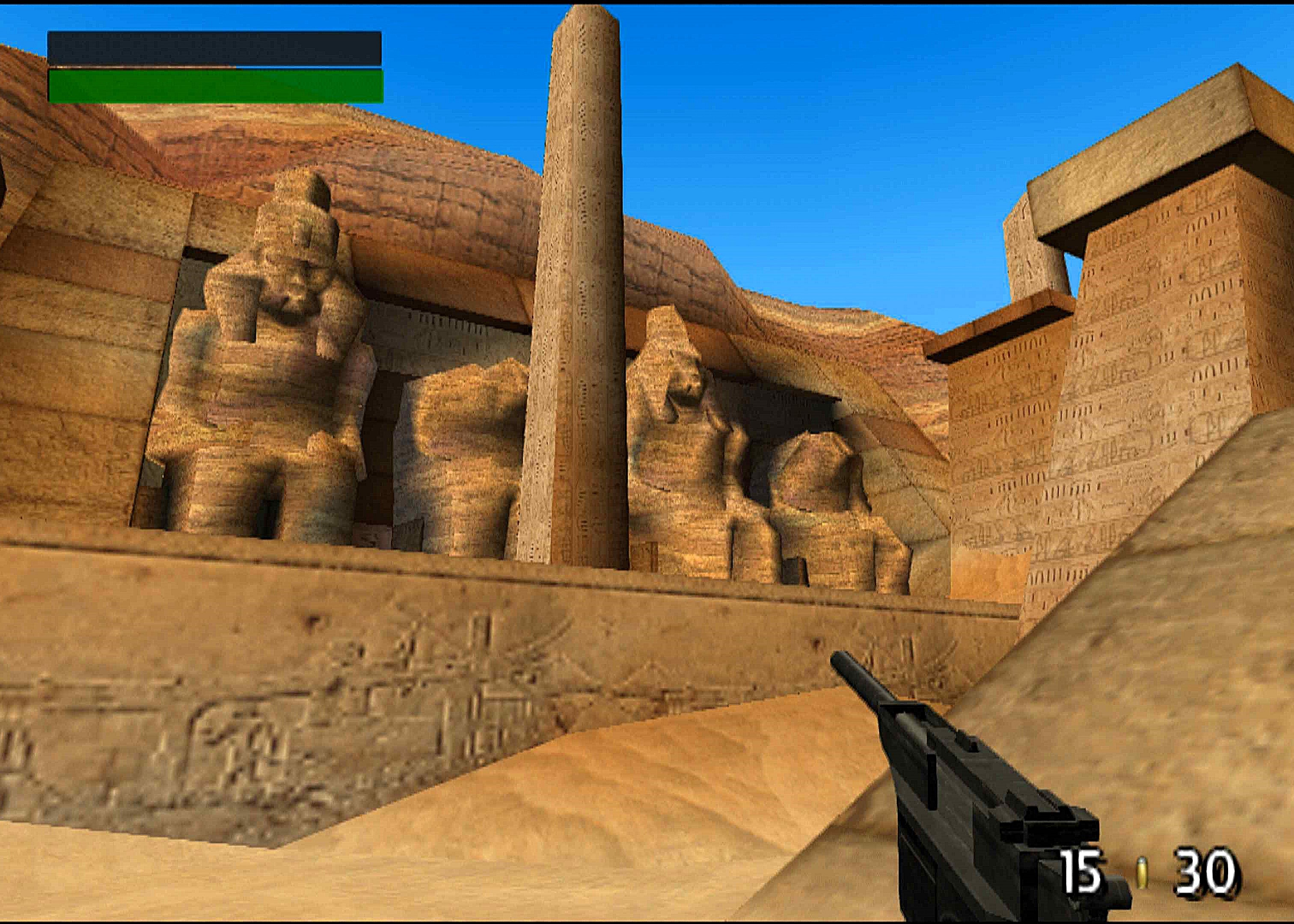
This bare-bones approach was not a deal breaker for gamers for two reasons: replayability and split screen co-op, With only 9 story missions and sentence long descriptions the team at Free Radical evidentially put their efforts toward developing an addictive gameplay loop. Each mission has 3 difficulty levels, and each level does more than dumbing down AI and changing health pool values. In fact, each difficulty level changes which enemies spawn, which guns are available to players, and where the “goal item” is located. The ability to play through the story mode with a friend, or most likely younger sibling, was the cherry on top.
Along with the dynamic difficulty system, every separate mission and its three difficulty levels are on a timer and will prominently show you your time upon completing a mission. If the player completed a run before the time allowed, they can be rewarded with AI bot sets, maps, additional playable characters for arcade mode, and even game-changing cheats (that would no doubt be behind a paywall today).
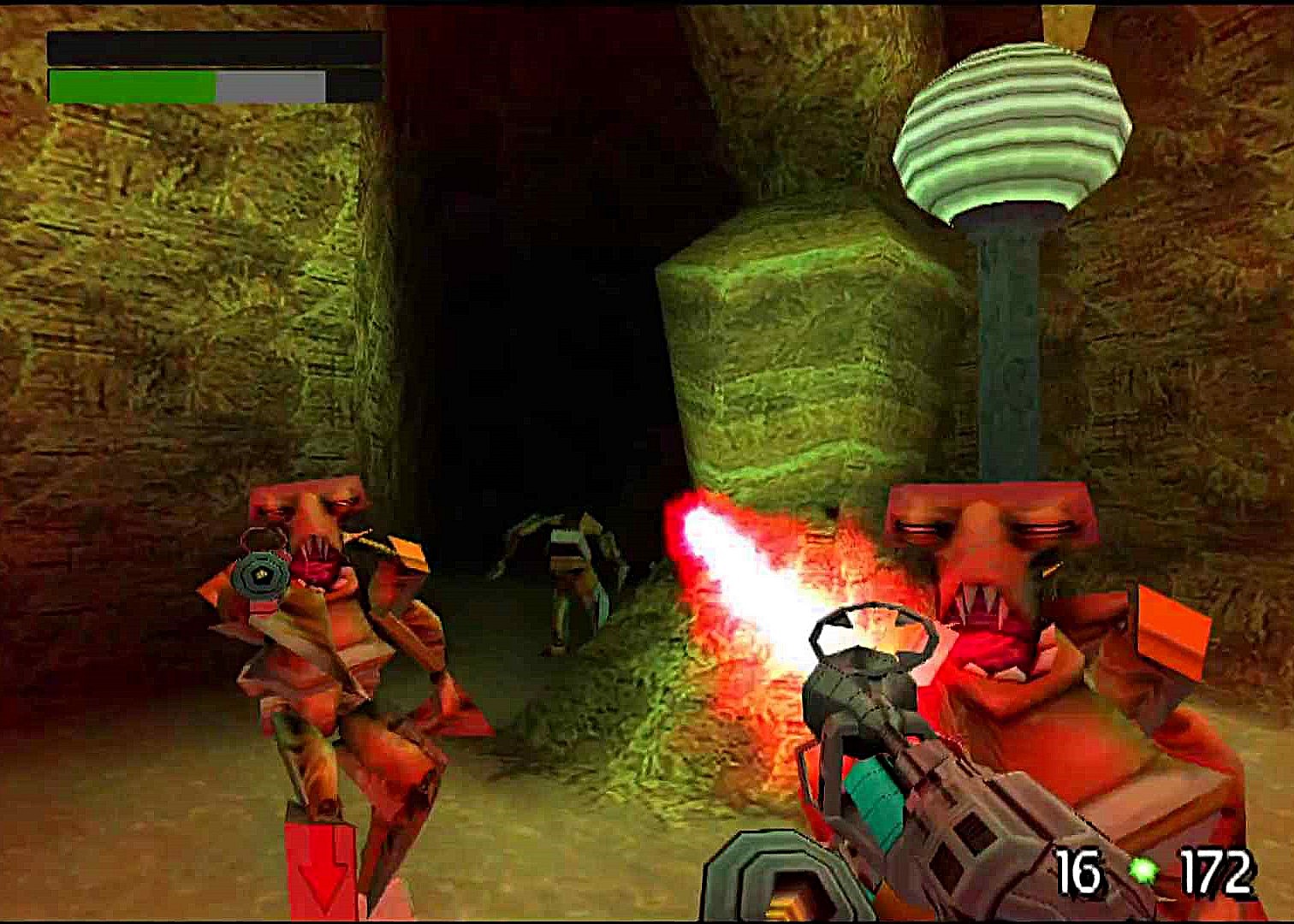
The campaign isn’t the end of the single player experience, though. The challenge mode unlocked after completing the final mission “2035 Spaceway” and offers even more single-player goodness. A total of 27 challenge missions are available to keep solo players busy. The objectives for these special missions are focused on completing arcade-style tasks. Such as in “Behead The Undead” where you are tasked with getting 50 headshots on zombified characters within a time limit. Then, upon completing a challenge mission you are again rewarded with a wide range of unlockables for arcade mode.
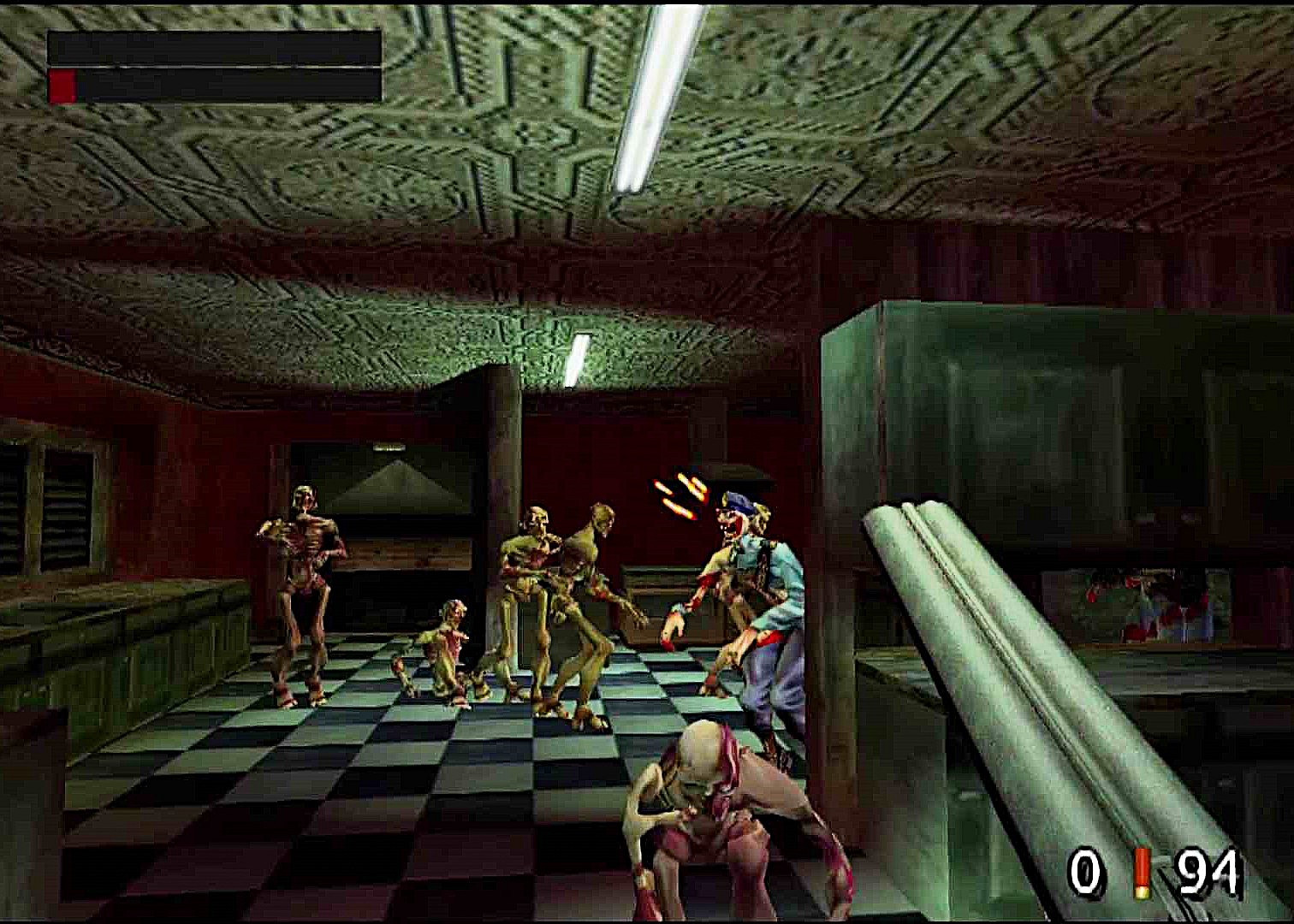
Arguably the most important aspect of the franchise and genre as a whole, the arcade mode in TimeSplitters is where Free Radical showed everyone in the industry they meant business. Every gun, every character, and every map in the game is playable in the arcade mode. After all, the rewards in the other 2 modes lead the player to arcade mode. Both the story and challenge modes are supplemental to the main event and what the TimeSplitters franchise is most known for.

In the simplest terms, arcade mode is TimeSplitters‘ multiplayer offering. Being from 2000 and a console game means that it looks a bit different than what a modern gamer would expect. For one, there is no online multiplayer option, as the PlayStation 2 was not in for their first online multiplayer game until 2001’s Tony Hawk’s Pro Skater 3. So, four-player split screen was the cap for real life players.
In order to fill up the match, bots were programmed by default in every game. These bots acted much like the enemies in the story mode and were capable of much more than the player characters. For example they would jump and roll away from incoming fire. Whereas the player character could at best crouch and strafe around the target. This would be a staple in the franchise and was quite welcome by players who would not have an internet connection, or friends, for the future titles.
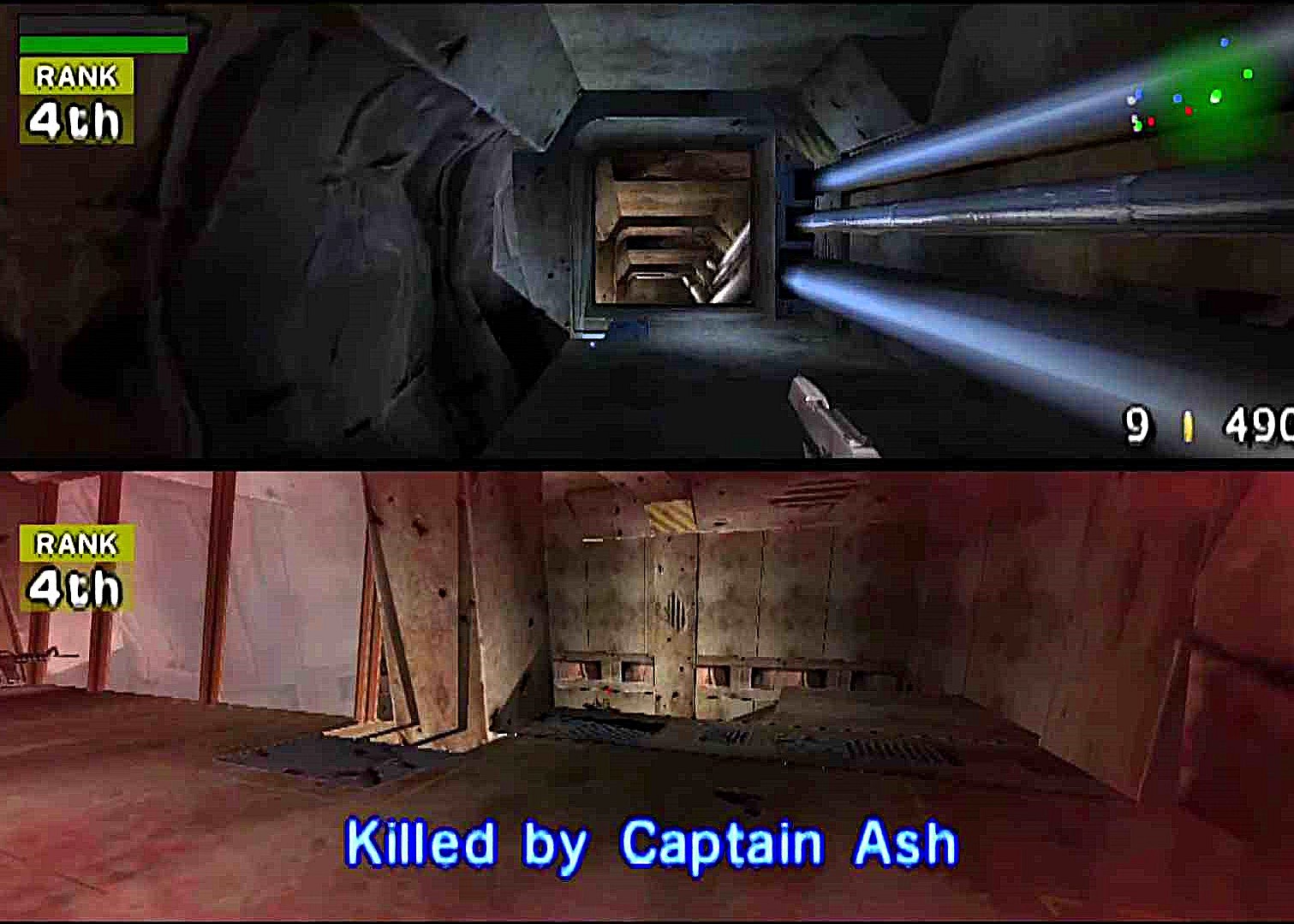
Furthermore, the arcade mode allowed you to completely customize a match. Setting the rules in any of the numerous game modes was only the first step. Next, the player would set up each team in regards to size, AI difficulty level, and even specify which characters weapons will be present in the match. This is where all of the story and challenge mode grinding pays off.
Dozens of bot sets and characters are available to be selected, along with the ability to toggle a variety of cheats. Not only that, a couple maps from story mode are reused, and the majority of them are designed specifically for arcade play. This meant that aside from the aesthetic variety already present in the story mode there was even more when playing arcade mode.
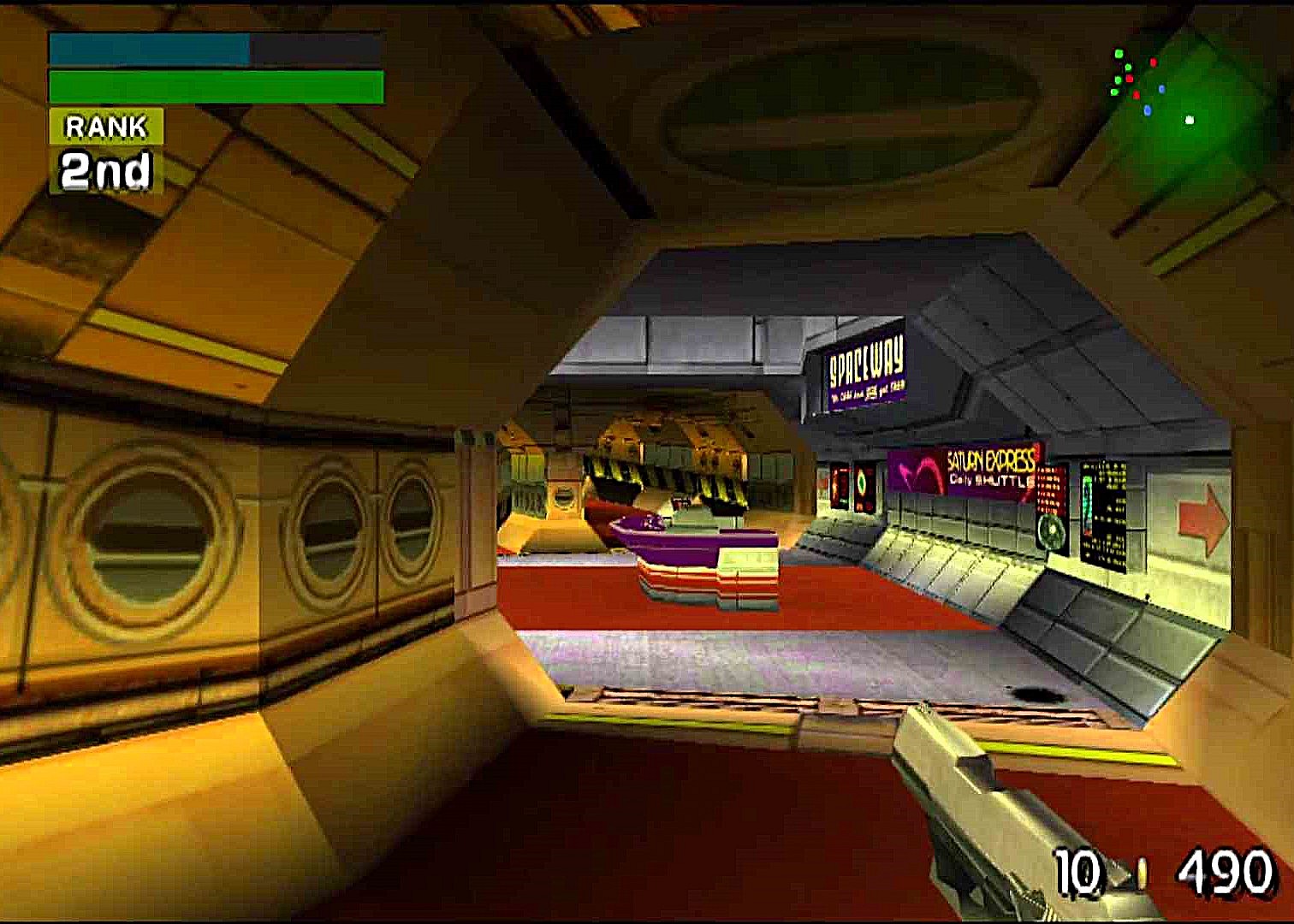
Speaking about the maps, TimeSplitters had one of the earliest level builders in console history. Originally considered a waste of time by the publisher, this comprehensive mode called “Map Maker” allows players to design the layout, spawn points, and item/weapon pickups in a fully customizable environment. The biggest downside to the mode was the fact that every tile had a preset aesthetic attached. This meant that despite two tiles fitting together perfectly, their styles had a good chance of clashing and resulting in a chaotic looking final product. The Map Maker was immensely popular and became an ever-present staple of the franchise.
Not to be forgotten, the character lineup was also pretty impressive. Compared to the microtransaction riddled Call of Duty and Overwatch games of the modern day, TimeSplitters, and basically every other game at the time, had character designs that were genuinely compelling to gamers.
Choosing between the cool and collected like Captain Ash or the sexy heroine Lady Jane was difficult with a line up of 64 playable characters. The cast even had a good amount of joke and fan service characters. A perfect example of a character who fits both categories is the anthropomorphic rabbit girl Farrah Fun-Bunny. Lighthearted designs like hers have long since been left behind for the likes of whatever was going on in Firewalk Studios’ hero shooter Concord earlier this year.
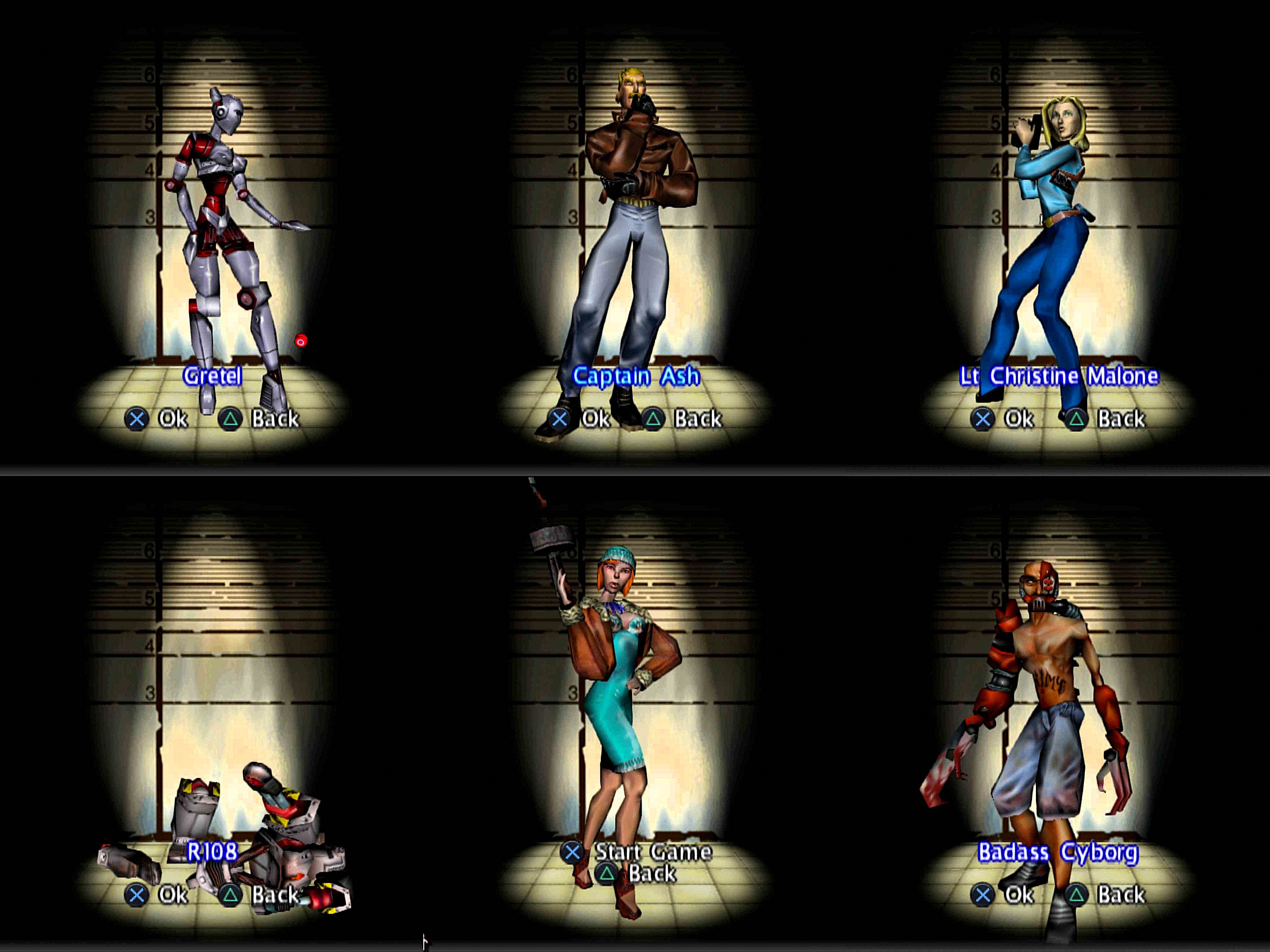
To double down on the comparisons between modem games and those of the past, it was obvious that Free Radical was concerned with providing a fun experience before anything else. Every decision they took while on a limited budget and tight time frame was in the service of maximizing customization and fun for players. The unlock system alone is testament to that. TimeSplitters from more than 20 years ago puts the modern shooters to shame. In a world where a “rare” character skin often cost upwards of $100 dollars, games like TimeSplitters valued the customer’s time and wallets by giving the player access to everything on the disk. Crazy concept huh?
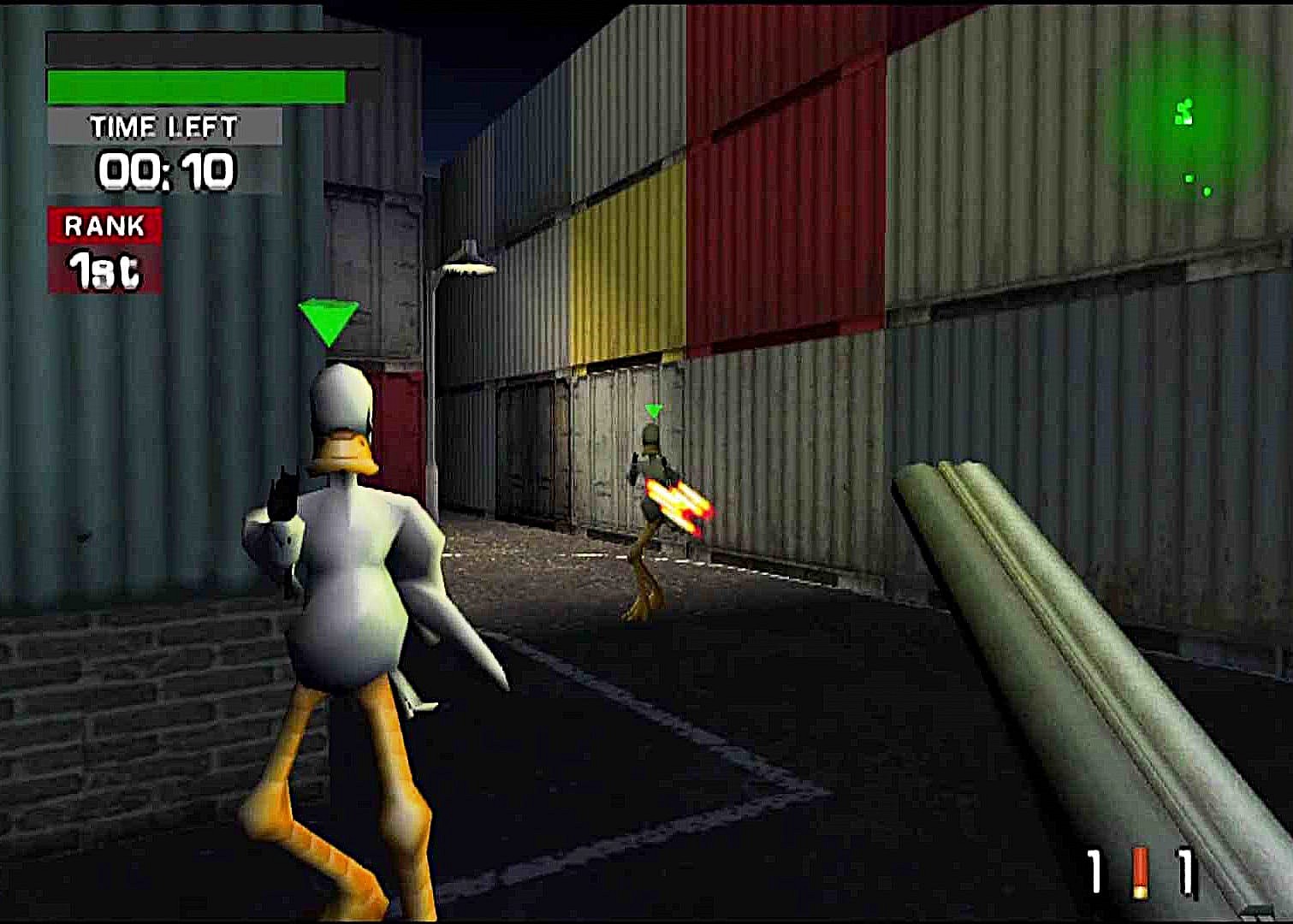
The launch of TimeSplitters was met with generally positive reviews. Their scores ranged from 50s to perfect 100s. IGN gave the game an 8.6, comparing the multiplayer to Unreal Tournament and citing the forgettable story mode as the reason it didn’t earn a higher score. On the other hand is Game Revolution, who scored the game a 50. They heavily criticized TimeSplitters for seemingly being averse to innovating the FPS formula and described it as “in the past”.
The trilogy’s recent addition to the PS+ catalog encouraged reviewers to return and give the game another shake. Push Square’s revisit to TimeSplitters resulted in a 5 out of 10 stars, citing ugly graphics and a “threadbare” campaign.
The game also drew comparisons to Rare’s Perfect Dark. Mostly in that it seemed to be a less polished version of the N64 title in both presentation and story. While Perfect Dark had a coherent story and fully animated cutscenes, TimeSplitters regrettably lacked both of those features. It should be mentioned that even in comparisons to Perfect Dark, most critics admitted that TimeSplitters’ multiplayer modes still outshine those of the N64 exclusive.
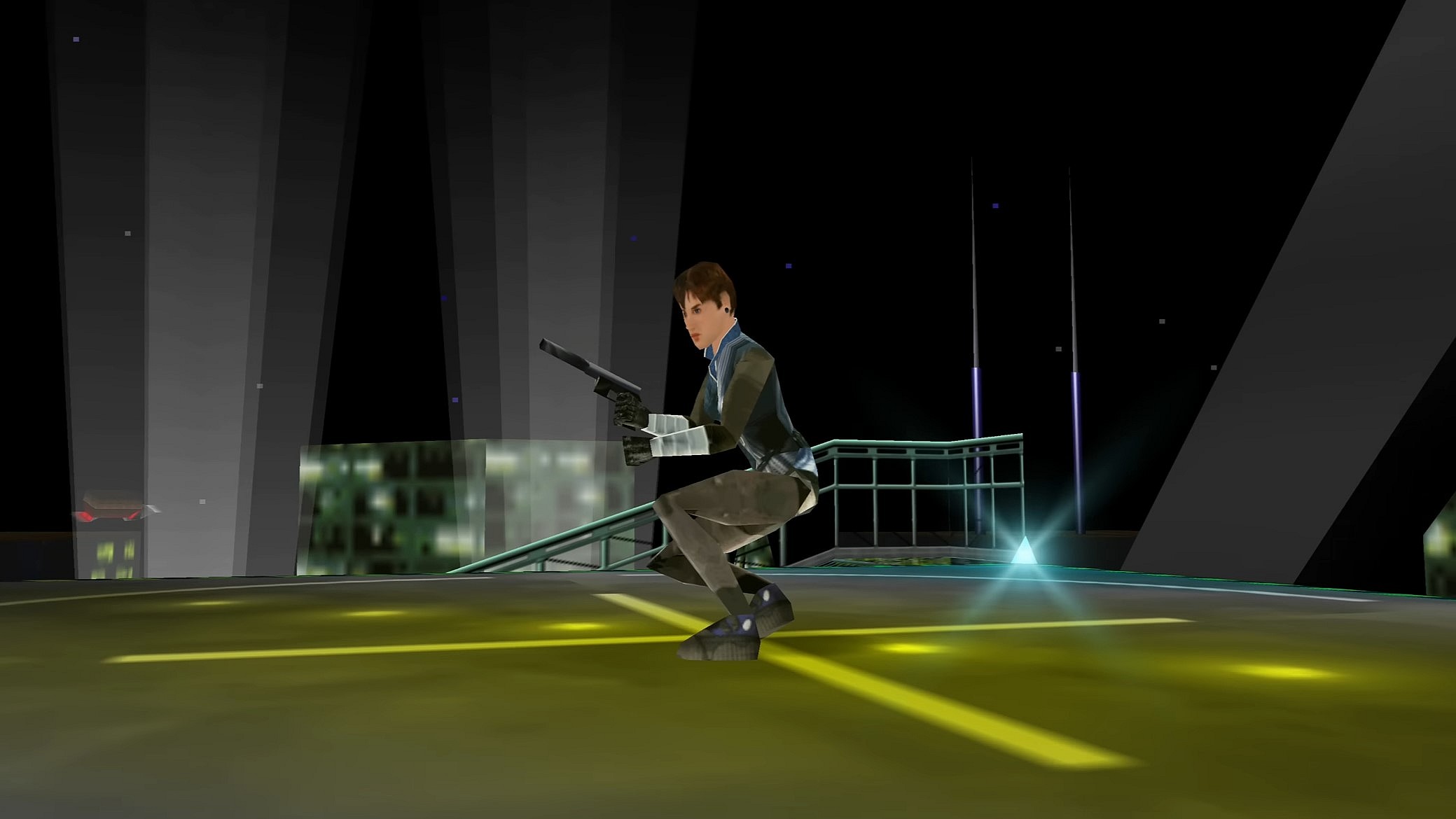
Nevertheless, most of the critics agreed, and it earned an 81 Metacritic score. Despite falling short in some aspects, the addictive gameplay loop of the multiplayer mode more than made up for it. Gamers agreed as well. Word of mouth was good, and even current day gamers look back fondly on the imperfect shooter that admittedly doesn’t hold up today.

TimeSplitters‘ unlikely success was evidence that gamers craved slick FPS games in the console space. Eidos Interactive saw the writing on the wall, and they were quick to green light a sequel from Free Radical. TimeSplitters 2 was on the horizon and gamers were in for something special.
